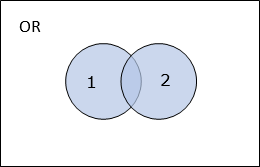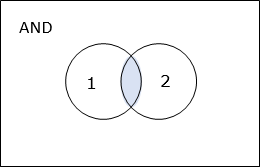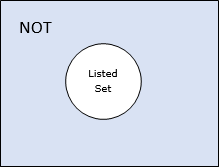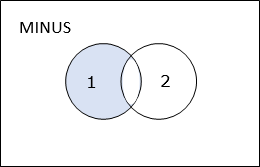SET
Bulk Data Entry Defines a set of grids, elements, design variables, MBD entities, mode numbers, frequencies or times for reference by other input definitions.
Format
| (1) | (2) | (3) | (4) | (5) | (6) | (7) | (8) | (9) | (10) |
|---|---|---|---|---|---|---|---|---|---|
| SET | SID | TYPE | SUBTYPE/ OPERATOR |
SUBSYS/OPTION1 | OPTION2 | ... | |||
| ID1/ MODE1/ REAL1/ NAME1/ SID1/ X1/ G1/ ALL |
ID2/ MODE2/ REAL2/ NAME2/p/ Y1 |
ID3/ MODE3/ REAL3/ NAME3/ SID3/ Z1 |
ID4/ MODE4/ REAL4/ NAME4/ SID4/ X2/ G2 |
ID5/ MODE5/ REAL5/ NAME5/ SID5/ Y2 |
ID6/ MODE6/ REAL6/ NAME6/ SID6/ Z2 |
ID7/ MODE7/ REAL7/ NAME7/ SID7/ RADIUS |
ID8/ MODE8/ REAL8/ NAME8/ SID8 |
||
| ID9/ MODE9/ REAL9/ NAME9/ SID9 |
etc. | etc. | etc. | etc. | etc. | etc. | etc. | ||
| etc. | etc. |
Alternate Format for ID Ranges
| (1) | (2) | (3) | (4) | (5) | (6) | (7) | (8) | (9) | (10) |
|---|---|---|---|---|---|---|---|---|---|
| SET | SID | TYPE | SUBTYPE | ||||||
| ID1 | THRU | ID2 | EXCEPT | ID3 | ID4 | ID5 | ID6 | ||
| ID7 | etc. | ENDTHRU | |||||||
| etc. |
Example 1
| (1) | (2) | (3) | (4) | (5) | (6) | (7) | (8) | (9) | (10) |
|---|---|---|---|---|---|---|---|---|---|
| SET | 56 | GRID | LIST | ||||||
| 88 | 93 | 17 | 1 | 23 | 29 | 35 | 48 | ||
| 33 | 102 | 22 |
Example 2
| (1) | (2) | (3) | (4) | (5) | (6) | (7) | (8) | (9) | (10) |
|---|---|---|---|---|---|---|---|---|---|
| SET | 56 | ELEM | LIST | ||||||
| 11 | THRU | 22 | |||||||
| 33 | THRU | 45 | EXCEPT | 39 | 40 | ||||
| 94 | THRU | 111 | EXCEPT | 100 | 101 | 102 | 103 | ||
| 104 | 105 | ENDTHRU | |||||||
| 120 | 121 | 125 |
Example 3
| (1) | (2) | (3) | (4) | (5) | (6) | (7) | (8) | (9) | (10) |
|---|---|---|---|---|---|---|---|---|---|
| SET | 50 | ELEM | OR | ||||||
| 29 | 30 | 31 |
Example 4
| (1) | (2) | (3) | (4) | (5) | (6) | (7) | (8) | (9) | (10) |
|---|---|---|---|---|---|---|---|---|---|
| SET | 11 | GRIDC | |||||||
| 12 | T1 | 15 | R2 | 128 | T3 |
Example 5
| (1) | (2) | (3) | (4) | (5) | (6) | (7) | (8) | (9) | (10) |
|---|---|---|---|---|---|---|---|---|---|
| SET | 11 | LABEL | |||||||
| LABEL1 | LABEL2 | TOP | UPPER | LOWER | LEFT |
Example 6
| (1) | (2) | (3) | (4) | (5) | (6) | (7) | (8) | (9) | (10) |
|---|---|---|---|---|---|---|---|---|---|
| SET | 11 | ELEM | PROP | EXCEPT | PHSELL | ||||
| 1 | 12 | 15 | thru | 128 | 555 |
Example 7
| (1) | (2) | (3) | (4) | (5) | (6) | (7) | (8) | (9) | (10) |
|---|---|---|---|---|---|---|---|---|---|
| SET | ID | GRID | ELTYPE | ||||||
| PLOTEL |
Definitions
| Field | Contents | SI Unit Example |
|---|---|---|
| SID | Unique set
identification. 1
No default (Integer > 0 or <String>) |
|
| TYPE | Identifies what
type of entities the set is comprised of. 3
No default |
|
| SUBTYPE | Indicates how the
set is defined. 3
|
|
| SUBSYS | Keyword to define a
subsystem for subsystem-based results. 12 This option generates an individual result file for a subsystem with results for that subsystem only. This is supported only for element-based set (TYPE = ELEM). |
|
| OPTIONi | Types of rigid
elements, the grids of which are to be a part of a rigid
element grid SET. This is only valid when
TYPE is set to GRID
and SUBTYPE is set to
RGTYPE. The following options can be
used individually or in combination. The
ALL option implies that all grids from
all rigid elements in the model are part of this set.
|
|
| OPERATOR | Operators supported
in defining Boolean sets. 5
6
7
No default |
|
| ID# | ID list. Only valid
for certain combinations of TYPE and
SUBTYPE. The entity to which the ID
corresponds depends on the TYPE and
SUBTYPE of the set. 3 ID ranges may be used in combination with ID lists. The keywords EXCEPT and THRU are used to define ID ranges. The keyword ENDTHRU identifies the end of an ID range and is required if an ID list is to follow where the first value is within the previous range. ID lists following EXCEPT must be in ascending order and must exist within the previous range. No default (Integer > 0) |
|
| MODE# | Mode number list.
Only valid when TYPE is
MODE. 3 Mode number ranges may be used in combination with Mode number lists. The same rules apply as for ID ranges. No default (Integer ≥ 0) 11 |
|
| REAL# | Real value list.
Only valid when TYPE is
FREQ or TIME.
3 No default (Real) |
|
| NAME# | Keyword list. Only
valid for certain combinations of TYPE
and SUBTYPE. The keyword EXCEPT is allowed only as the first entry in a keyword list. Default = Undefined 3 |
|
| SID# | Identification
number of another SET definition. Used in
defining Boolean sets. Only valid when
OPERATOR is defined in
SUBTYPE/OPERATOR
field 5
6
7
8 No default (Integer > 0 or <PartName.number>) |
|
| X1, Y1, Z1, X2, Y2, Z2 | X, Y, and Z
coordinates of two opposing corners of a cuboid. Only valid
when SUBTYPE is BBOX or
BBOXC 3 No default (Real) |
|
| G1, G2 | Grid ID's (G1, G2) can be used instead of (X1, Y1, Z1), (X2, Y2, Z2) data (see field descriptions above). G1, G2 should be defined in the basic coordinate system (CP field on the GRID entries should be blank). | |
| ALL | Keyword used for ID
lists to indicate that all IDs of the appropriate entity
type are to be included in the set. Only valid in first field of ID list. May be followed by keyword EXCEPT (see below). |
|
| RADIUS | Radius of the
Cylindrical Bounding Box to define a GRID/ELEM SET. Only
applicable to the BBOXC
SUBTYPE. No default (Real > 0.0) |
|
| THRU | Keyword used for ID
ranges to indicate that all IDs between the preceding ID and
the following ID are to be included in the set. Definition of range may contain list of exceptions in the following form: N1 THRU N2 EXCEPT N3 N4 ... ENDTHRU where, N1 ≤ N3 < N4... ≤ N2; N1 < N2 |
|
| EXCEPT | Keyword used for ID
ranges and keyword lists to indicate that the following IDs
or keywords are to be excluded from the set. Only valid in first field for keyword lists. When ALL is given as the first entry for an ID list, EXCEPT may be given as the second entry, in which case all subsequent IDs are excluded from the set of ALL entities of the defined TYPE. |
|
| ENDTHRU | Optional keyword used after EXCEPT to indicate the end of an excluded ID list definition. |
Comments
- SID must be unique with respect to all other SET definitions (regardless of type). It must also be unique with respect to any SURF entries and any legacy SET/PSET I/O Options definitions.
- String based labels allow for easier visual identification of sets, including when being referenced by other cards. (For example, the GSETID field in SPC). For more details, refer to String Label Based Input File in the Bulk Data Input File.
- The following table describes subtype
combinations and the set TYPE's for which they are
valid.
TYPE SUBTYPE Description GRID LIST or undefined This is a set of grids - structural grids (GRID) or scalar points (SPOINT) - defined either as a simple list of grid IDs, or as some combination of ranges of grid IDs and lists of grid IDs. BBOX This is a set of grids defined by a bounding box. The fields X1, Y1, and Z1 provide the coordinates of one corner and X2, Y2, and Z2 the coordinates of an opposing corner of a cuboid. All grids contained within this cuboid are included in the set. The bounding box can also be defined using the G1 and G2 fields instead of (X1, Y1, and Z1) and (X2, Y2, and Z2), respectively.
BBOXC A set of grids defined by a cylindrical bounding box. The fields X1, Y1, and Z1 provide the coordinates of the center of the circular face of one end. X2, Y2, and Z2 provide the coordinates of the circular face of the other end of a cylinder of radius equal to the value on the RADIUS field. All grids contained within this cylinder are included in the set. The bounding box can also be defined using the G1 and G2 fields instead of (X1, Y1, and Z1) and (X2, Y2, and Z2), respectively.
ELEM This is a set of structural grids (GRID) belonging to listed elements. DMIG This is a set of grids belonging to the listed DMIG(‘s). DMIG's can either be listed by name (in the NAME# fields), or using the flag ALL (this would select grids of all DMIG’s). RGTYPE A set of grids which belong to the listed rigid element(s) in the OPTIONi field(s). This is only valid for sets with TYPE=GRID. ELEM LIST or undefined This is a set of elements defined either as a simple list of element IDs, or as some combination of ranges of element IDs and lists of element IDs. BBOX This is a set of elements defined by a bounding box. The fields X1, Y1, and Z1 provide the coordinates of one corner and X2, Y2, and Z2 the coordinates of an opposing corner of a cuboid. All elements whose centroids are contained within this cuboid are included in the set. The bounding box can also be defined using the G1 and G2 fields instead of (X1, Y1, and Z1) and (X2, Y2, and Z2), respectively.
BBOXC This is a set of elements defined by a cylindrical bounding box. The fields X1, Y1, and Z1 provide the coordinates of the center of the circular face of one end and X2, Y2, and Z2 the coordinates of the circular face of the other end of a cylinder of radius equal to the value on the RADIUS field. All elements contained within this cylinder are included in the set. The bounding box can also be defined using the G1 and G2 fields instead of (X1, Y1, and Z1) and (X2, Y2, and Z2), respectively.
PROP This is a set of elements defined in one of the following ways: - Through a list of property IDs, or some combination of ranges of property IDs and lists of property IDs. If multiple properties have the same ID (as PBAR may), they are all considered. All elements referencing the selected properties are included in the set.
- Through a list of property types. All elements referencing properties of the listed type (PBAR, PCOMP, PSHELL, and so on) are included in the set.
- Through a list of excluded property types. All elements except those referencing properties of the listed type, following the keyword EXCEPT, are included in the set.
- List of property types or list of excluded property types may be followed by some combination of ranges of property IDs and lists of property IDs. All elements referencing properties satisfying both requirements (type and ID) are included in (or accepted from) the set.
MAT This is a set of elements defined through a list of material IDs, or some combination of ranges of material IDs and lists of material IDs. All elements referencing properties, that in turn reference the selected materials, are included in the set. ELTYPE This is a set of elements defined in one of the following ways: - Through a list of element types. All elements of the listed type (CQUAD4, CHEXA, CBEAM, and so on) are included in the set.
- Through a list of excluded element types. All elements except those of the listed type, following the keyword EXCEPT, are included in the set.
- In addition to all valid element types, the
following element type groupings may be used:
- SOLID
- For CTETRA, CPYRA, CPENTA and CHEXA elements referencing structural property definitions.
- FLAT
- For CQUAD4, CQUAD8, CTRIA3 and CTRIA6 elements.
- SHELL
- For FLAT elements referencing properties with non-zero MID2.
- MEMBRANE
- For FLAT elements referencing properties with zero MID2.
- BEAM
- For CBAR and CBEAM elements.
- ROD
- For CONROD and CROD elements.
- FLUID
- For CTETRA, CPYRA, CPENTA and CHEXA elements referencing fluid property definitions.
- BUSH
- For CBUSH and CBUSH1D elements.
- CELAS
- For CELAS1, CELAS2, CELAS3, and CELAS4 elements.
- SPRING
- For CBUSH, CBUSH1D, CELAS1, CELAS2, CELAS3, and CELAS4 elements.
- CONM
- For CONM1 and CONM2 elements.
- CMASS
- For CMASS1, CMASS2, CMASS3, and CMASS4 elements.
- MASS
- For CONM1, CONM2, CMASS1, CMASS2, CMASS3, and CMASS4 elements.
For rigid elements (RROD, RBAR, RBE1, RBE2 and RBE3). See RIGID below. DMIG This is a set of elements belonging to the listed DMIG(‘s). DMIG’s can either be listed by name (in the NAME# fields) or using the flag ALL (this would select elements of all DMIG’s). RIGID LIST or undefined This is a set of rigid elements defined either as a simple list of rigid element IDs, or as a combination of ranges of rigid element IDs and lists of rigid element IDs. GRIDC LIST or undefined This is a set of GRID/Component pairs. DESVAR LIST or undefined This is a set of design variables defined either as a simple list of design variable IDs, or as some combination of ranges of design variable IDs and lists of design variable IDs. MODE LIST or undefined This is a set of mode numbers defined as a simple list of mode numbers, or as some combination of ranges of mode numbers and lists of mode numbers. This can also reference a list of RANDPS Bulk Data Entry IDs. Such a SET Bulk Data Entry can be referenced by the RANDOM Subcase Entry.
FREQ LIST or undefined This is a set of real values representing frequencies defined simply as a list of real values. TIME LIST or undefined This is a set of real values representing times defined simply as a list of real values. LABEL LIST or undefined List of arbitrary labels. Each label must start with a letter and contain only letters or digits. PLY LIST or undefined This is a set of ply ID's defined in the PLY or PCOMPG Data Entries. - SET definitions using may refer to non-existing entities. This is allowed, but the actual SET will contain only grids or elements which are present in the structure.
- The Boolean operators OR,
AND, NOT and MINUS
are recognized for SET combinations.
- Operator
- Description
- OR
- An entity is included in the SET, if
it is included in a minimum of one of the constituent
sets. OR is used to expand the
SET by combining items from
various SET's (for example, an
entity is included in SET, if it is
present in SET1,
SET2, or
SET3, or ...). The example
below shows the OR operator working on
SET's 1 and 2.

Figure 1. - AND
- An entity is included in the SET, if
it is included in all of the listed sets.
AND is used to restrict the
SET to a typically smaller
subset (for example, an entity is included in
SET, if it is present in
SET1, SET2,
and SET3, and ...). The example
below shows the AND operator working
on SET's 1 and 2.

Figure 2. - NOT
- An entity is included in the SET, if
it is not included in the listed set (for example, if
an entity is not included in SET 1,
then it is included in SET). The
example below shows the NOT operator
working on SET 1.

Figure 3.Note: Only one set should be listed for the NOT operator. - MINUS
- An entity is included in the SET if
it is included in the first set, but not in the second
set. The example below shows the MINUS
operator working on SET 1.

Figure 4.Note: Only two sets may be listed for when this operator is used.
- Boolean SET definitions can only be used when all listed sets are of the same TYPE.
- Boolean SET definitions can reference other Boolean sets, but circular references must be avoided. Boolean SET can be defined only for GRID, ELEM, or RIGID set types.
- Supported local entries in specific parts
can be referenced by the use of "fully-qualified references" on
SET entries in the model. A fully-qualified
reference (PartName.number) is similar to the format
of a numeric reference. PartName is the name of the
part that contains the referenced local entry (part names are defined on
the BEGIN Bulk Data Entry in the
model). number is the identification number of a
referenced local entry in the part PartName. Refer to
Parts and Instances in the User
Guide for detailed information on the use of fully-qualified
references.
The SET Bulk Data Entry can be used in the global part to reference SET's defined within different parts. These SET entries in the global part can contain fully qualified references to part-specific SET data only if logical operators (OPERATOR field) are used. For example:
The following SET entry exists in part A:BEGIN, FEMODEL, A SET, 29, ELEM, LIST 15 THRU 30 ...END, FEMODEL, AReferencing SET, 29 in the global part G:BEGIN, FEMODEL, G SET, 78, ELEM, OR A.29 ... END, FEMODEL, G - ELIST is an alternative to
SET and SURF, but
ELIST is intended only to provide compatibility
with Nastran decks. It is recommended to use
SURF/SET, instead of
ELIST. Additionally,
- The SURF and SET entries may not be combined with ELIST entries to define damp elements.
- ELIST entries are internally converted to SET entries. If ELIST is referenced on a minimum of one MFLUID entry, then all MFLUID entries in a model must reference ELIST entries. In such cases, if an MFLUID entry references a particular Set Identification Number (<SID>) to define WSURF1/WSURF2 fields without a corresponding ELIST,<SID> in the model, then OptiStruct will not search for a SET/SURF,<SID>.
- K2GG, M2GG, K42GG, B2GG, K22GGSUB, M2GGSUB, and B2GGSUB can reference SET of labels. Only one set can be referenced on each of these entries, but multiple such entries are supported.
- In cyclic symmetry analysis, SET with TYPE = MODE can be used to specify the solution harmonic indices by referencing the SET in the HARMONICS I/O Options Entry, or the segment indices by referencing the SET in the NOUTPUT I/O Options Entry, where each mode number corresponds to a harmonic or segment index. Mode number of 0 is meaningful only for HARMONICS in cyclic symmetry analysis.
- Subsystem based output can be used
when results are required for an individual part of a model.
- The current supported is limited to H3D format only. It is available only in a regular .h3d file and not in _impl.h3d. Results for each subsystem is available in a <model_name>#.h3d, where # is the subsystem ID.
- This option must be used along with output requests.
- When TYPE = SUBSYS, only SUBTYPE = LIST is allowed.
DISP(SUBSYS=101) = ALL STRESS(SUBSYS=102) = ALL STRAIN(SUBSYS=103) = ALL ELFORCE(SUBSYS=104) = ALL ESE(SUBSYS=1001) = ALL ... BEGIN BULK $ 1) As an individual subsystem $--1---><---2--><---3--><---4--><--5---><--6---><---7--><--8---><---9--> SET 101 ELEM LIST SUBSYS + 7 9 11 12 13 14 SET 102 ELEM PROP SUBSYS + 11 SET 103 ELEM MAT SUBSYS + 1 2 SET 104 ELEM ELTYPE SUBSYS + CQUAD4 $ 2) As a combination of multiple small subsystems $ Here, subsystem 201 is an union of element sets 101, 102, 103 and 104 $--1---><---2--><---3--><---4--><--5---><--6---><---7--><--8---><---9--> SET 201 ELEM OR SUBSYS + 101 102 103 104 $ 3) As a list of many subsystems $--1---><---2--><---3--><---4--><--5---><--6---><---7--><--8---><---9--> SET 1001 SUBSYS LIST + 101 102 103 104 201 ... - This card is represented as a set in HyperMesh.